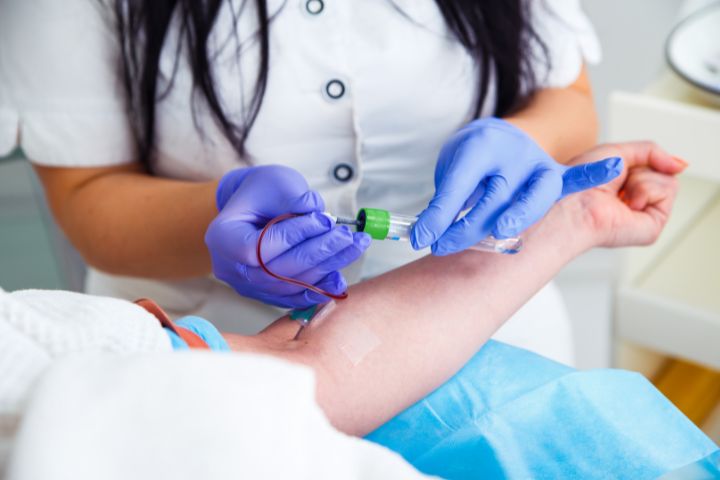Some Known Facts About Northeast Medical Institute - New Haven Campus Phlebotomy Course & Cna Class.
Some Known Facts About Northeast Medical Institute - New Haven Campus Phlebotomy Course & Cna Class.
Blog Article
The Best Guide To Northeast Medical Institute - New Haven Campus Phlebotomy Course & Cna Class
Table of ContentsA Biased View of Northeast Medical Institute - New Haven Campus Phlebotomy Course & Cna ClassHow Northeast Medical Institute - New Haven Campus Phlebotomy Course & Cna Class can Save You Time, Stress, and Money.What Does Northeast Medical Institute - New Haven Campus Phlebotomy Course & Cna Class Mean?Northeast Medical Institute - New Haven Campus Phlebotomy Course & Cna Class Can Be Fun For EveryoneThe Ultimate Guide To Northeast Medical Institute - New Haven Campus Phlebotomy Course & Cna ClassSome Known Incorrect Statements About Northeast Medical Institute - New Haven Campus Phlebotomy Course & Cna Class
The use of such tools should be accompanied by various other infection avoidance and control practices, and training in their usage.For settings with low resources, expense is a motoring element in purchase of safety-engineered gadgets - CNA Courses. Where safety-engineered gadgets are not offered, experienced use a needle and syringe serves. Unintended direct exposure and specific details concerning an occurrence must be recorded in a register. Assistance solutions need to be advertised for those that undertake unexpected direct exposure.
One of the important pens of quality of treatment in phlebotomy is the involvement and collaboration of the person; this is equally advantageous to both the health and wellness employee and the individual. Clear information either composed or spoken should be available per client that undergoes phlebotomy. Annex F supplies example text for explaining the blood-sampling treatment to a patient. In the blood-sampling area for an outpatient department or facility, give a comfortable reclining couch with an arm rest.
Northeast Medical Institute - New Haven Campus Phlebotomy Course & Cna Class Things To Know Before You Get This
Ensure that the signs for blood tasting are clearly defined, either in a composed protocol or in recorded guidelines (e.g. in a lab form). Accumulate all the tools needed for the treatment and area it within risk-free and very easy reach on a tray or trolley, making sure that all the things are clearly noticeable.
Introduce yourself to the patient, and ask the person to state their full name. Examine that the lab form matches the client's identification (i.e. match the patient's details with the laboratory type, to ensure exact identification).
Make the individual comfortable in a supine setting (ideally). Place a clean paper or towel under the person's arm. Discuss the test to be carried out (see Annex F) and get spoken consent. The patient has a right to reject an examination any time before the blood tasting, so it is essential to ensure that the patient has understood the procedure.
Northeast Medical Institute - New Haven Campus Phlebotomy Course & Cna Class for Beginners
Extend the client's arm and check the antecubital fossa or forearm. Situate a vein of a good dimension that is visible, straight and clear.
DO NOT put the needle where capillaries are drawing away, because this increases the opportunity of a haematoma. The blood vessel ought to show up without using the tourniquet. Locating the capillary will certainly aid in figuring out the right size of needle. Use the tourniquet concerning 45 finger sizes above the venepuncture website and re-examine the vein.
Haemolysis, contamination and presence of intravenous liquid and medication can all change the outcomes (39. Nursing team and doctors might access central venous lines for samplings adhering to methods. Specimens from central lines bring a threat of contamination or incorrect research laboratory examination results. It is acceptable, yet not perfect, to draw blood samplings when initial introducing an in-dwelling venous tool, prior to attaching the cannula to the intravenous liquids.
The 9-Second Trick For Northeast Medical Institute - New Haven Campus Phlebotomy Course & Cna Class
Permit the location to completely dry. Failure to permit adequate call time increases the danger of contamination. DO NOT touch the cleansed website; specifically, DO NOT position a finger over the blood vessel to assist the shaft of the subjected needle. It the website is touched, repeat the disinfection. Do venepuncture as follows.
Ask the individual to form a clenched fist so the blood vessels are more famous. Enter the capillary promptly at a 30 degree angle or much less, and continue to present the needle along the blood vessel at the simplest angle of access - CNA Classes. Once enough blood has actually been accumulated, release the tourniquet prior to taking out the needle
Our Northeast Medical Institute - New Haven Campus Phlebotomy Course & Cna Class Ideas
Take out the needle carefully and use mild stress to the site with a tidy gauze or dry cotton-wool sphere. Ask the client to hold the gauze or cotton woollen in position, with the arm extended and elevated. Ask the client NOT to flex the arm, since doing so causes a haematoma.

Unknown Facts About Northeast Medical Institute - New Haven Campus Phlebotomy Course & Cna Class
Do not push the syringe bettor due to the fact that extra stress enhances the danger of haemolysis. Where possible, maintain televisions in a rack and move the rack in the direction of you. Inject downwards right into the proper coloured stopper. DO NOT remove the stopper because it will release the vacuum. If the example tube does not have a rubber stopper, inject incredibly slowly right into the tube as decreasing the stress and rate utilized to move the specimen reduces the threat of haemolysis.

Report this page